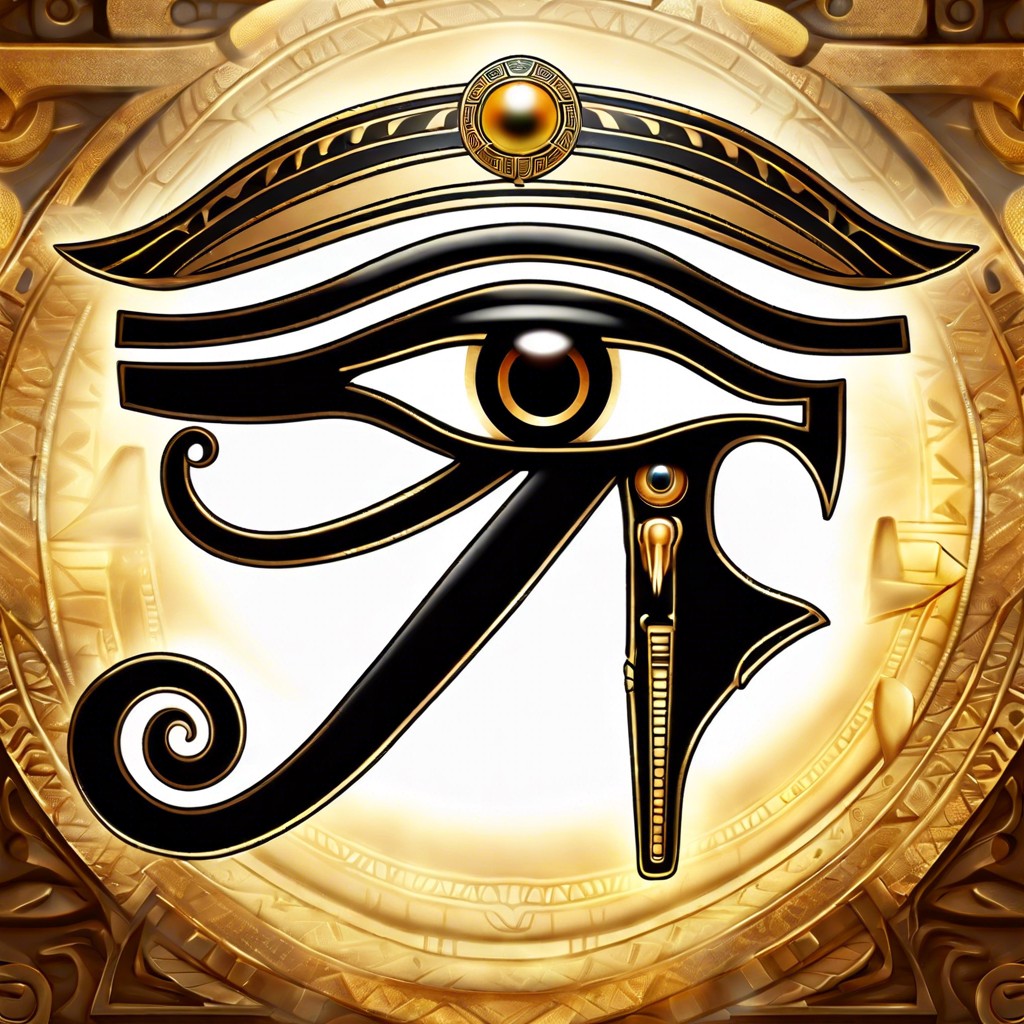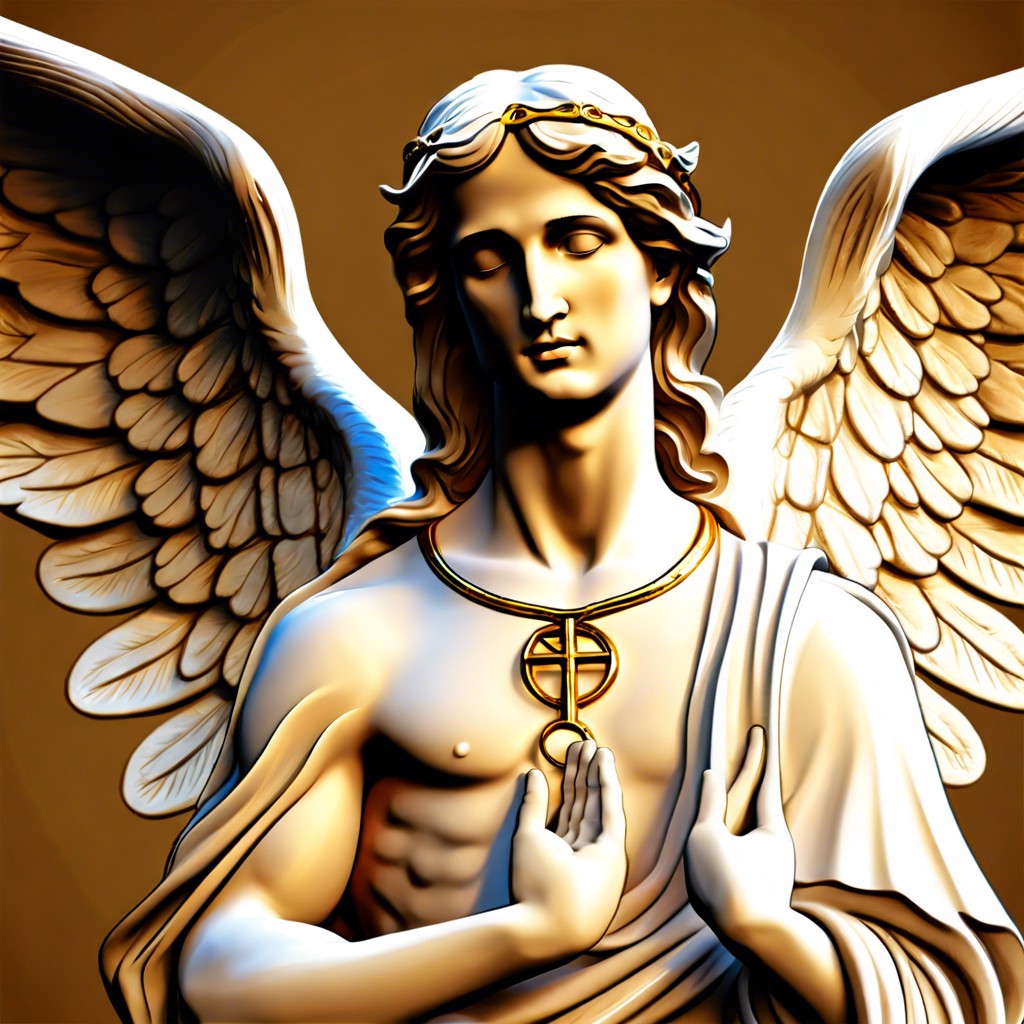In this article, you’ll learn about the spiritual meaning and symbolism behind the Eye of Horus.
The Eye of Horus, an iconic symbol of ancient Egyptian culture, intertwines mythology, protection, and healing. As you delve into its rich history, learn how it connects to the gods Horus and Ra, and explore its use in amulets and talismans. Discover its modern cultural significance and interpretations, and uncover the enduring mystique of this powerful emblem.
Key takeaways:
- Eye of Horus: ancient Egyptian symbol of protection and healing.
- Symbolism: represents royal power, good health, protection from evil.
- Connection: linked to gods Horus and Ra, symbolizes healing.
- Powers: protective amulets, healing properties, balance and well-being.
- Modern: symbolic jewelry for protection, spiritual awareness, and insight.
Symbolism in Ancient Egyptian Culture

In ancient Egyptian culture, symbols held deep meanings and connections to their gods, beliefs, and daily lives. The Eye of Horus stands out as a powerful emblem within this rich tapestry.
It embodies protection, symbolizing the watchful eye of the sky god Horus. It also represents royal power and good health, reflecting its mythological origins tied to battles and healing.
Embedded in their mythology, it was believed that this eye could ward off evil spirits and bad fortune, making it a common protective charm.
Moreover, its intricate design, incorporating both human and animal features, reflects the Egyptians’ keen observation of nature and its integration into their spiritual world.
The Eye of Horus thus serves as a window into the Egyptian mindset, blending protection, health, and the divine into one potent symbol.
Connection to Horus and Ra
Ancient Egyptian mythology tells a fascinating story about Horus, the sky god. The Eye of Horus symbolizes his left eye, which was torn out during a battle with Set, the god of chaos. It’s said that Thoth, the god of wisdom, restored the eye, making it whole again. This tale underscores the eye’s association with healing and restoration.
Interestingly, the Eye of Horus is also linked to Ra, the sun god. Often, the right eye represents the sun (Ra) and the left eye the moon (Horus). This duality melds light and dark, day and night, balance in the universe.
These symbolic connections imbue the Eye of Horus with layers of meaning. It’s more than a simple icon; it’s a narrative of divine struggle, recovery, and cosmic harmony.
Protective and Healing Powers
Believed to have immense protective and healing properties, the Eye of Horus was more than just a symbol. Ancient Egyptians often used it in amulets to ward off evil and ensure well-being.
The eye was thought to represent the god Horus’s journey to reclaim power, signifying restoration and wholeness. It symbolized protection against illness or harm, making it a vital part of funerary practices.
Beyond protection, the eye also symbolized healing. The symmetry of the Eye of Horus was associated with balance, a key element in maintaining health. Its detailed design—combining human and falcon features—was seen as a powerful emblem for safeguarding one’s health and spiritual integrity.
Use in Amulets and Talismans
Ancient Egyptians often integrated this symbol into jewelry. Amulets featuring it were believed to offer powerful protection. Soldiers wore them for safety in battle. Fishermen donned them, hoping for bountiful catches.
Mourners placed these amulets inside tombs, hoping to ensure safe passage for their loved ones in the afterlife. The eye’s components, each representing the six senses—sight, hearing, smell, touch, thought, and taste—symbolized holistic well-being.
Crafted from materials like gold, silver, and lapis lazuli, amulets were both precious and meaningful. The meticulous design and intent behind each piece underscored their deep spiritual significance.
Modern Cultural Significance and Interpretations
In today’s world, the Eye of Horus continues to capture the imagination. Its inclusive symbolism transcends cultures and belief systems, making it a favored motif in various forms of modern art and fashion.
People often wear jewelry featuring the Eye of Horus, believing it offers protection and good health. In tattoos, it symbolizes inner vision and the pursuit of truth.
Some associate the Eye of Horus with the “third eye,” linking it to spiritual awareness and enlightenment. It also appears frequently in literature and media, symbolizing mystery and timeless wisdom.
Even in digital spaces, the symbol is prevalent in logos and branding, where it conveys insight and protection.
Overall, the modern embrace of the Eye of Horus illustrates humanity’s enduring fascination with its powerful meaning and rich history.





